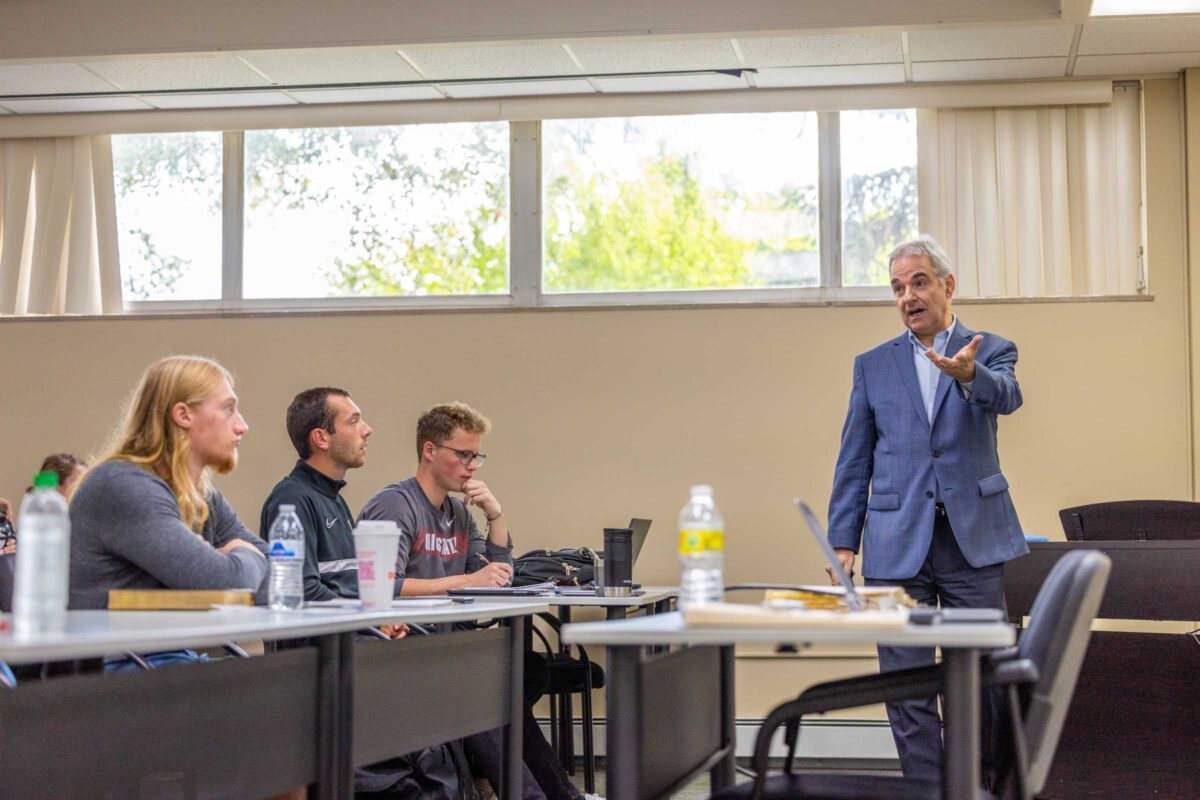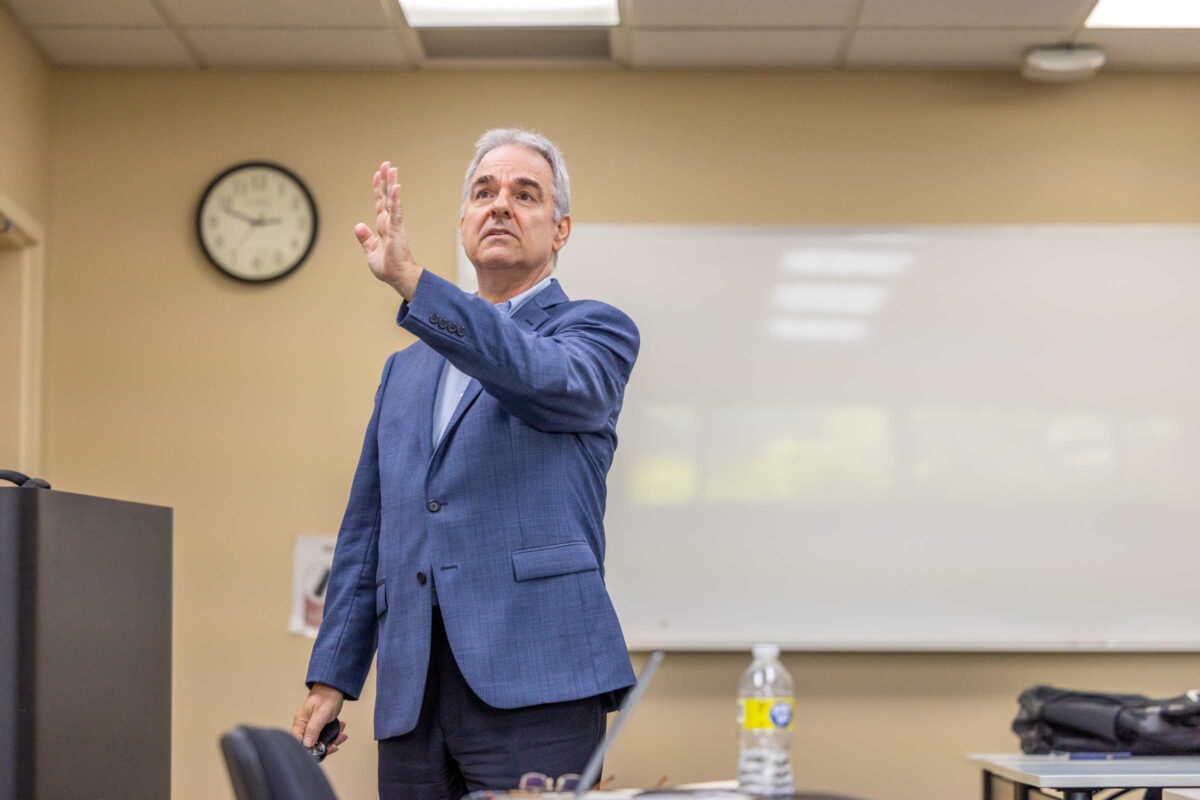October 27, 2023
How to Prepare a Message to Preach: Expository Preaching and Teaching Tips with Dr. Rock LaGioia
Written By Grace Theological Seminary
Tagged With Preaching & Pastoring Master of Divinity Dr. Rock LaGioia

A faculty blog by Dr. Rock LaGioia
Grace Theological Seminary’s Expository Preaching and Teaching class focuses on expository preaching, which is, as defined by Haddon Robinson, “the communication of a biblical concept, derived from and transmitted through a historical, grammatical, and literary study of a passage in its context, which the Holy Spirit first applies to the personality and experience of the preacher, then through the preacher, applies to the hearers.” This method provides the preacher with a deeper understanding of how to prepare a message to preach, and most importantly, how to communicate one’s findings.
The first step in expository preaching is to pray through and carefully analyze a given passage. The goal is for the Scripture to speak for itself, as opposed to the preacher reading his own ideas into what the text says. This is accomplished through determining the exegetical idea, which is composed of a subject and a complement. The exegetical subject answers the question, “What is the biblical author talking about?” The exegetical complement answers the question, “What is the biblical author saying about what he is talking about?” The goal here is to remain in a historical lens that determines what the original author was saying to his original audience.
Next, in order to bridge the gap between the ancient passage and the contemporary Christian, the exegete must remove historical language to identify the timeless principle gleaned from the text. So, instead of saying “Paul told the Christians at the church in Corinth…”, it would be stated as “Christians should…” The goal is to use timeless language to state what the Scripture is saying to God’s people across time.
After identifying the timeless principle, the preacher must then insert pronouns such as “we,” “us,” and “you” to fully bridge the gap between the author’s original message and what contemporary Christians need to learn. This is important because the truths in the Bible are not removed from culture, and nor are today’s Christians. We need to be able to own the truths of Scripture in a way that honors its original context.
Once the teacher has their biblical material fully studied and processed, it is time to construct a preaching outline. The preacher’s goal is to guide the listener through the text by pointing out important details, employing word study, and consulting supporting passages in order to fully get the Big Idea across. A homiletical outline focuses on the main points of the text with supporting information that clearly corroborates the main ideas.

Finally, a homiletical outline will be paired with illustrations and applications that further illuminate the points the preacher wants to make. An illustration is meant to answer, “what does this look like?” This may include word pictures, stories from the preacher’s life, or a life situation that most people can relate to. Applications answer “what does this look like for me?” Preachers must understand the needs of their listeners and include several points of application in order to cover the scope of needs represented in the audience.
When considering how to prepare a message to preach, Grace Theological Seminary promotes this method because it upholds the integrity of God’s Word as our ultimate authority for life and godliness. The preacher’s task is to study and present Scripture so that other people can have a personal encounter with the God of the Universe. Preachers must let the inspired text penetrate their hearts and minds so that they can present the text with integrity and help others hear from His Word.
These sermon writing tips have been tested by myself and my students. This methodology has proven itself true, and it continues to be a cornerstone for those who want to honor God’s Word through preaching. I have been preaching since 1987. Through the years, I have implemented additional principles and techniques, but the basic method of expository preaching has remained the same. I enjoy getting to see it continue to benefit students as they are chosen for pastoral positions and have the opportunity to bless a congregation through preaching.
Now that you understand how Grace Seminary trains students in how to prepare a message to preach, it’s time to consider how you would like to engage with the biblical text. If you are looking for a seminary that will challenge you to dig deeper into a passage of Scripture, get into the minds of your audience members through illustrations, and challenge listeners through insightful application, then Grace Seminary is the right place for you to get your master’s degree. Check out our Master’s of Divinity in Exegetical Studies to get started today.
Rock LaGioia
Rock LaGioia, Professor of Pastoral Studies and Director of Doctoral Programs, is passionate about building up the body of Christ by training the next generation of effective church leaders. Rock has many years of pastoral experience and enjoys preaching and teaching sound doctrine regularly at worship services, conferences, and seminars.
Share
Tagged With Preaching & Pastoring Master of Divinity Dr. Rock LaGioia



